Zoe Spurr – The Personality of Light
Posted on June 2, 2025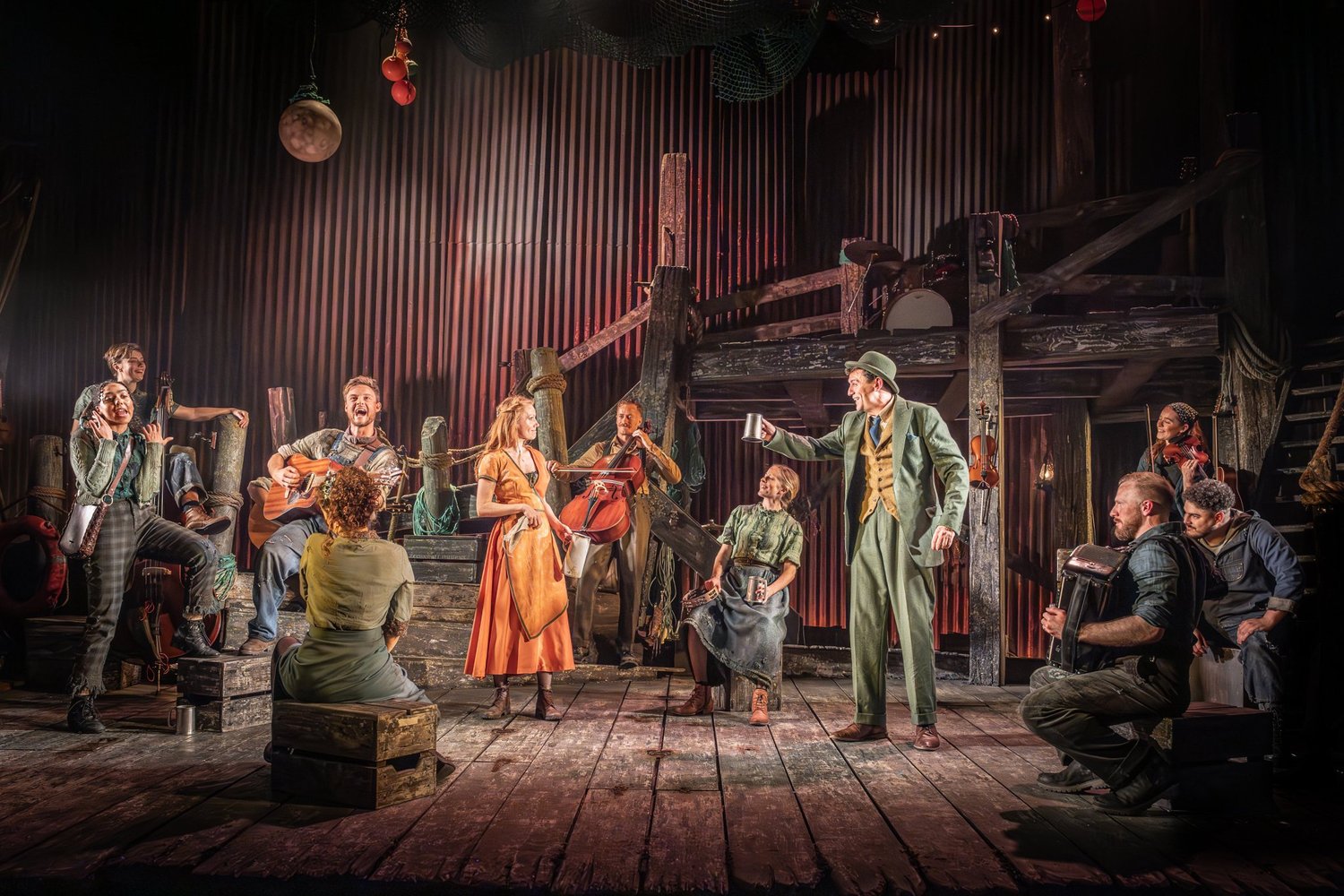
Given its power to add depth and texture to the mood on a stage, it isn’t surprising that the work of this multi award-winning UK designer has been singled out on more than a few occasions by theatre critics. However, it often isn’t Zoe Spurr’s technical skills, as impressive as they are, that are the object of these writers’ attention, but rather her impressive, some might say uncanny, ability to use light to reflect the deepest nuances of her characters’ personalities.
Reviewing the Royal Shakespeare Company’s recent production of Twelfth Night, one critic applauded her ability to “shift” the emotional tone of the play. Indeed, at times it can seem that the essence of her lighting comes not just from her design plot and fixtures, but from something residing inside the hearts and minds of a play’s characters themselves.
That is no accident. At the start of every project Spurr immerses herself in the lives of those characters, stiving to develop an abiding empathy for how they feel, think, love, and live. These guideposts to the inner lives of characters are invariably defined by color. Rather than identify colors solely by their technical identities, she often thinks of them in terms of “emotional names,” such as “Happy White,” “Sad White” and “Neutral White,” as she did when discussing her work for “The Artist” at Theatre Royal, Plymouth.
Of course, there is much more than a keen empathetic understand of characters that empowers Spurr’s work. There is also the impeccable mastery of design’s technical skills from key lighting, working with colors, and positioning fixtures, to balancing light and shadows.

Photo: Marc Brenner
Spurr, winner of the 2019 ALD “Lightmongers” award, spoke to us about the powerful personality of light.
Writing about your lighting in “The Seven Ages of Patience” at the Kiln Theatre, one critic said it created “shadows of a man’s past.” Your work has been justifiably praised for reflecting the inner life characters. So, we have to ask, is there a mood or emotion that you find most challenging to reflect in light?
“I think it depends on all the elements at play within the production. Sometimes the right idea comes early in the process and sustains and grows in strength throughout technical rehearsals/previews. In other cases, it takes more carving, time and thought. Sometimes sound/composition inspires light, and sometimes I offer a lighting state that I feel is right for the mood or emotion and other collaborators get inspiration from that.”
We’ve been impressed with the nimbleness of your key light. Specifically, we’re thinking of your work in “Benjamin Button” at the West End’s Ambassador Theatre. It seems like it’s spot on, whether you’re lighting the character in warm or cold tones. How do you get key lighting right?
“Sometimes it’s as satisfying as the right light, in the right place, on the right actor, at the right time! Often the perfect angle for a light or key is restricted by various set elements or actors blocking, but this is when I work with the director and choreographer to negotiate spacing, as they too want the perfect key light. Between us we strive to find it!
“As you work through a production in tech you quickly learn which colors and angles work best for certain actors, characters and set — so that becomes a useful base to expand upon. ‘Benjamin Button’ was particularly challenging because we didn’t have follow spots. However, this opened the door to so many other key lighting ideas whether that became a strong low sidelight following the path of a performer with up light casting shadows across faces and set, or a front of house unit perfectly focused to get light and sparkle into eyes.”
Another thing that’s impressed us is your use of dark space. What are your thoughts on dark space and shadows, in terms or using, but not over using them in design?
“I often find myself lighting productions where set doesn’t move, therefore lighting must do the shifting of locations, and dark space is useful to close down areas of the stage to focus attention onto performers.
“Shadows are something I always consider carefully. Light will always fall somewhere, and I work carefully to ensure intentional shadows can be preserved with clever angles of lights elsewhere to fill around the shadow. Shadows also help quickly change a dynamic of a space, casting an up light shadow onto a vast back wall transforms a space and allows the performer to take up practically the whole space with the one light and where the light/shadow is falling. To go from this look, to a top light closed down, small shadow is very impactful and can quickly offer that location shift needed for narrative.”
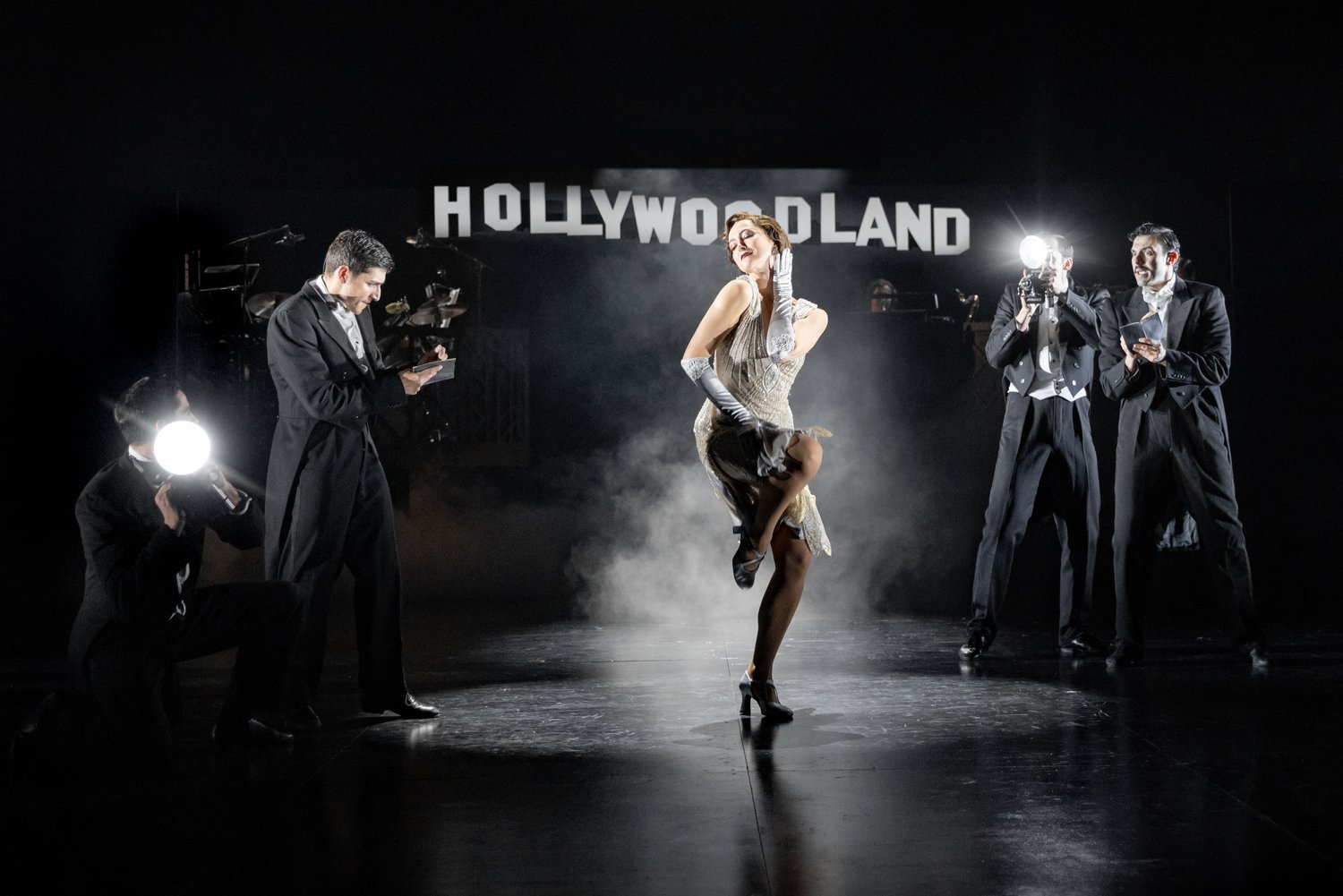
Photo: Marc Senior
In some of your work, such as ” Fantastically Great Women That Changed The World,” you use a rich variety of colors, whilst in others like “The Artist,” there is little to no color. How is it different for you working in “black-and-white” compared to color in terms of convey moods and the passage of time on stage?
“Color is something you often think about and design right from the off- text, design. Collaborators often spark ideas for the color palette of the production, and it’s a useful language to use as color is universally understood!
“I’ve always found a way to bring strong color into a show as key light, this journey started with lighting for the fringe when you find yourself with only 24 generic lights to light the show. For a production of ‘Tiny Dynamite’ that I lit at the Old Red Lion Theatre, I chose an open white tungsten system, along with a backlight and a sidelight wash. Most of this could be used all at the same time, playing with intensity and number of lights active, then using just the wash shifted tone and visual really quickly and could hold a scene well on its own.
“Limiting color palettes can be useful, especially when using enormous moving light rigs where almost any color is achievable at any time! Finding the right color for the production, and being able to use this to inspire other choices really helps my process. ‘Fantastically Great Women That Changed The World’ was always going to be a very colorful show. We started with a blue and yellow set, and a black floor with multi-colored patterns!
“Each musical number also needed a clear color identity. This was often led by costumes, as well as the sound of the number. For example, ‘Deeds not Words’ was a purple and bright white number with splashes of UV to enhance the purple, and offer a third color for certain looks. The white worked well with straight narrow beams to symbolize prison cell bars, and cut through the purples for useful beam shapes and effects in the air.
“‘The Artist’ is a well-known black and white movie. Throughout the design process for that play, we spoke about whether or not it would be right to slowly morph into a color world as the sound and dialogue grew, but we decided it was stronger to stay in black and white. Even the finale, the gold dress shone out enough so we didn’t need any other lighting than the black-and-white we’d seen throughout.

Photo: Helen Murray Photography
“Before we started technical rehearsals, the performers took to the stage with full costume, lighting and wigs — my lighting programmer and I then looked at various different shades of cool white landing on low, mid and high intensity color palettes for three different whites. Happy white, sad white, and neutral white. This color work prior to tech was invaluable, and also was immensely important for the wigs and makeup department to make any adjustments ahead of tech after seeing the lighting.”
When you first take on a project, what do you do to familiarize yourself with the play?
“If it’s new writing, often the writer and director can give lots of insight into the why’s and how’s of the play, where the ideas came from and where the play hopes to travel throughout the process. If it’s Shakespeare, or classic piece for example, there’s a wealth of information and studies about plays and their writers which can be useful to know, and help understand the story.
“I find new musicals tricky to absorb early on, seeing lyrics on a page without a track is difficult to picture how this translates to a stage, so it’s important to get tracks and demos as soon as possible to get a true understand of the piece. Composers are brilliant people who bring these words to life through music, then I can take this and help bring it to life on stage! So much is also learnt through rehearsals and watching a play find its feet — often so many discoveries are made by the collaboration of everyone in that rehearsal space.”
How do you get inspired at the start of a play? Listening to music? Long walks?
“I like to build Pinterest boards, often designers or directors do the same and we share those together to find visuals that feel right for the show. Throwing out ideas at an early stage is so helpful to learning what will and won’t work for a show, sometimes one image can lead the way to the whole design process.
“Art galleries are also useful places to wander around, finding light in paintings or even just spaces, particularly Tate Modern can be a great springboard for ideas on stage. Long walks with the dog are also a great way of being alone with your thoughts, the thinking time for lighting is often overlooked, deadlines are tight and practicalities overtake, so it’s important to make time to really enjoy and grow ideas as the process progresses.”
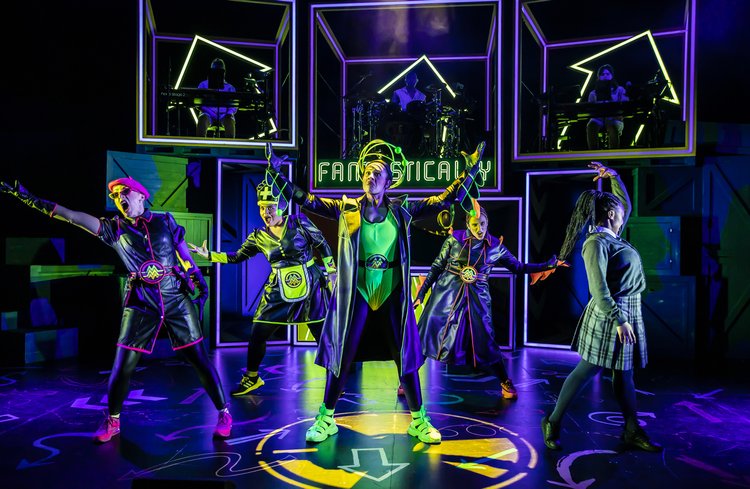
Photo: Pamela Raith
Do you ever procrastinate at the start of a project?
“Always! Ideas don’t hit just because you’ve signed a contract. You never know where an idea might come from, and when — and you hope that it’ll arrive in good time for the show! Early collaboration with the creative team makes sure the ideas train is on the move, and sometimes you feel stuck with a direction and other times you feel crystal clarity on what the lighting should do. I think I have both these feelings on every show, some scenes and moments I know exactly what I’d like to try, others I have no idea at all, and others I have an idea A,B and C to try!”
Do you have to like a play to do a good job lighting it?
“It certainly helps, if you can resonate with the play and performances the lighting will echo the deeper emotions of the production. I think enough lighting designers have skill and experience to deliver a good lighting design, but an exceptional one is when you become absorbed in the process and see the importance of this play existing and an audience connecting with it. I always make sure I feel I’m right for the show, it’s important to me to work on meaningful productions with a team of collaborators who have the same goal. I understand enough about my style of lighting and what I like doing that I can discuss this with directors ahead of the job to understand exactly what I can bring to a project and how I can enhance it, or not….!”
Do the personalities, physical appearance, stage persona of actors influence your decisions on how to light them?
“Certain angles work better for different performers, and throughout tech you find lights and angles which work well for different people. The characters they play often inspire a color and angle, and it can be a useful storytelling tool to link a color to performers. For example, in Twelfth Night, I lit, Antonio and Sebastian with green and cold light to add clarity to their location. The stage space was an open thrust stage, so lighting was important to carve out these key location shifts. The green also felt right for their link to the sea, and the storm, it felt earthy and coastal, and worked well with their costumes.”
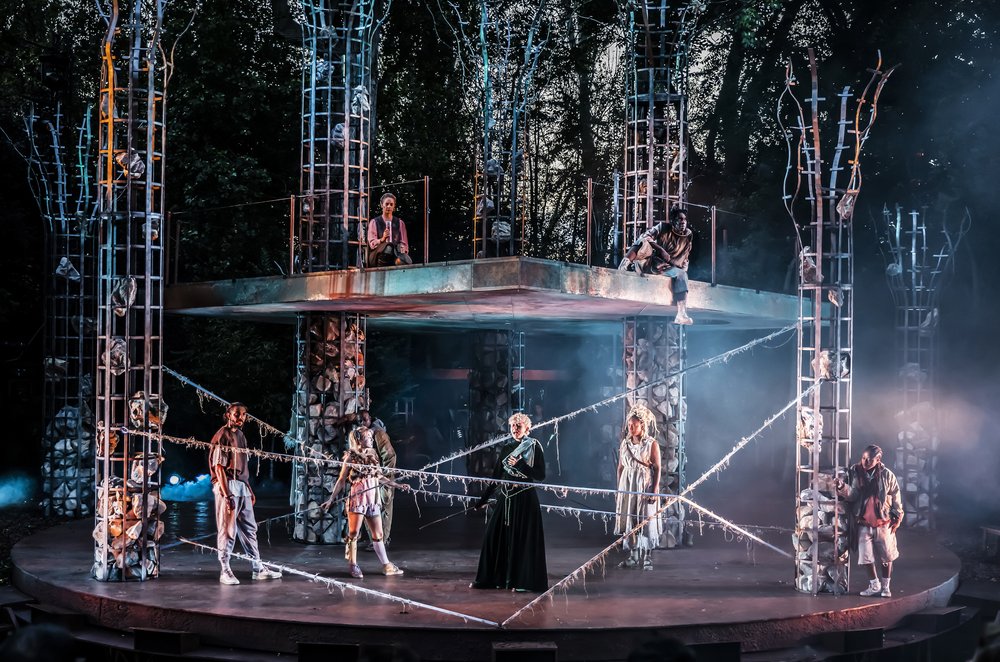
You just mentioned “Twelfth Night,” which you lit for the Royal Shakespeare Company’s. Can you tell us what that experience was like?
“It was an honor to light a production for the RSC, I grew up around 45 minutes away so had seen productions there, and had also done my university placement there, so felt very at home within the building. Prasanna Puwanarajah, the director had a strong vision for the show along with James Cotterill designer, he spoke a lot of the open safe space for performers to exist in, along with finding key aside moments, or connections within the story to anchor lighting and change dynamic.
“We were able to find the fantastic battens for our enormous angled Lightbox, and the quality of light set the tone for the piece and carried us through as a key source for those first few scenes until it flew out to reveal the organ. It was almost like lighting two shows with the Lightbox first shifting through to the 7m high organ, but the flexible and extensive rig at the RSC offered lots of options to light the show.”
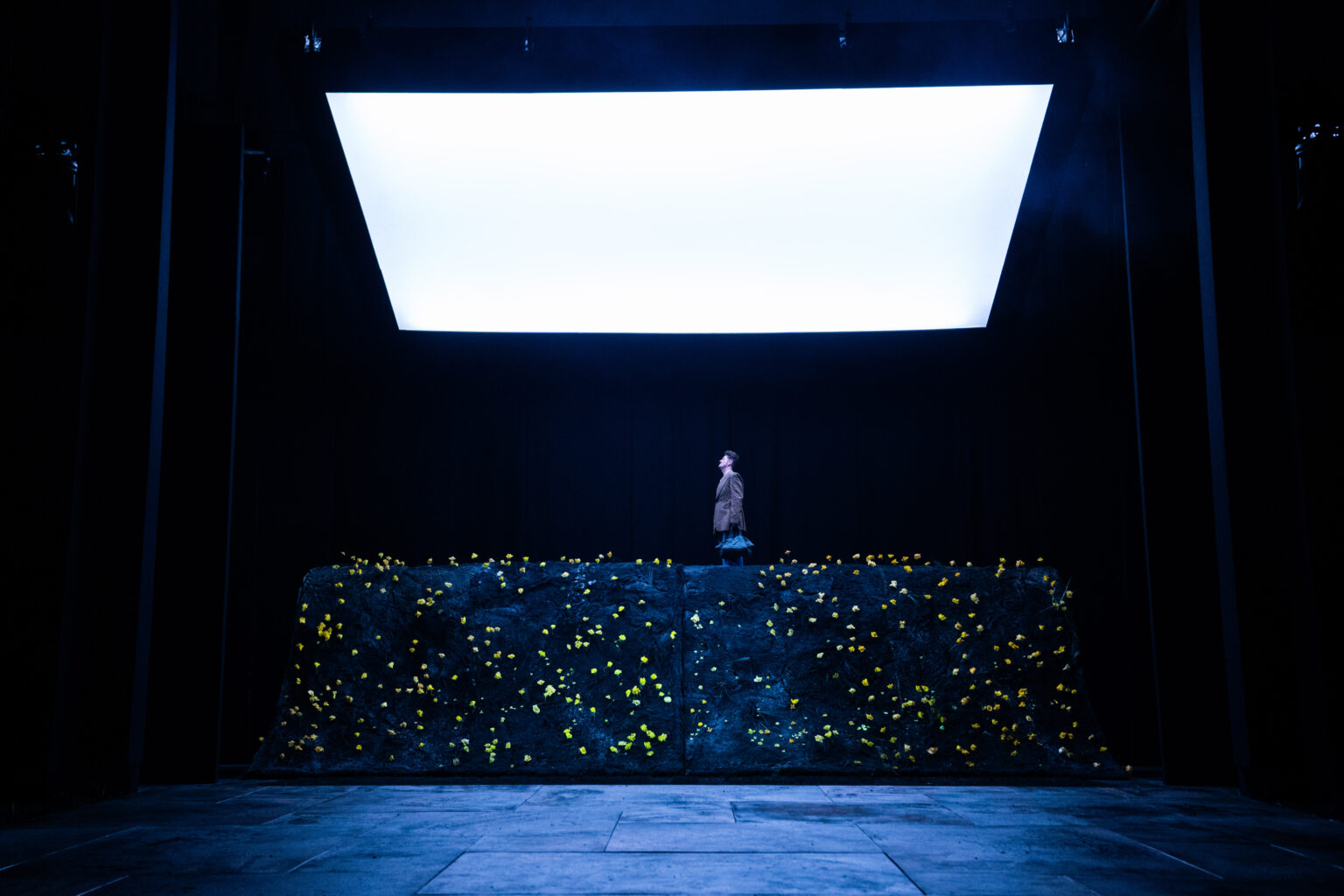
Photo: Helen Murray Photography
As you just pointed out, in that play as in many others, LED technology has given you the ability to make dramatic changes in color quickly and easily. How has this changed a designer’s approach to lighting a play. How has it change the relationship between set designers and lighting designers?
“I feel that every lighting designer, designer and director has a different opinion and experience about LED technology, and it’s important to find the right light with the right quality for the show. I feel scenic designers understand lighting can do so much more these days, and extremely quickly – and they enjoy working with lighting designers to find the best color for costumes and set, and different options too.”
What role do you see video (LED wall or projection) playing in theatre?
“Video designers work very thoroughly to find the right medium for their content, sometimes it’s both LED screens and projection, or sometimes projection clearly leads the way based on set design and style of play. I’ve been through processes where video has been removed from a show, deemed not right for the storytelling, or where it’s been added later down the line to support narrative and design. I work very closely with video designers, on ‘The Artist,’ there were three LED screens which flew in and out to various trim heights which contained the silent movie dialogue for the characters speech, and we found a really successful way of these appearing out of absolute darkness. We achieved this by pulling action under, or downstage of the screens and make sure no excess light carried behind the screen as this gave away the illusion of text appearing as if by magic. This was meticulously done, along with the flying cues and timings, but the effect was impressive.”
Suppose you ran into someone on a plane, told them you were a theatre lighting designer and they asked you “what does that mean?” What would you tell them?
“I have had it assumed that means theatre lighting for a hospital! Once you begin to explain what your job is, i.e. all the lights you see in and around the theatre, and then say I put those there, I turn them on and off, chose their colors and timing, and all of this is programmed down to a GO button, they think back to times they’ve been in a theatre to watch a show and the realization comes to them! I find my friends and family outside of the industry now take time to look at lighting, design and direction as well as enjoying the show of course, but it provides a deeper understanding of theatre and what it takes to get a show to the stage, so hopefully though these conversations we can get more understanding out there.”
Looking at your career to date is there one project that stands out as a pivotal moment because of what it taught you about lighting design, or yourself as a designer?
“There have been various productions over the years which have steered my career, and ones which have stayed vividly with me. Productions that taught me about lighting were often ones I was the associate on, seeing an experienced LD work on vast scales taught me about the importance of streamlining your work and process, who is who, how and when to have conversations, how to design a show for a tour. Specifically, 1984 with Headlong, Natasha Chivers lit this and I was the re-lighter then later became the associate. Seeing the show grow through the years helped me understand the importance of constant engagement of an evolving production, new ideas being implemented and how this is done, and how a show adapts for tour vs the West End.
“A production I lit, Emilia, which was at the Vaudeville Theatre West End taught me so much about myself and my practice, I felt it landed at the perfect time for me as an artist and I really enjoyed diving deep into the process to find the right ideas for the show. It was also a very emotional show about the power of women in history, and not giving up, and after the first preview I found myself with tears in my eyes, really proud of what we’d achieved and how much it meant to the cheering audience all on their feet. Theatre like that doesn’t often happen, and it was a brave and important production brought to stage by some very inspiring people.”
What is the one thing you want people to know about you as a designer?
“I’d like to be thought of as a friendly, open person who’s always there for conversation and collaboration. It’s important to me to make the industry a safe and happy place for people to work in, so if this can slowly change through conversation and action ideas, then I’d like to play a part in that.”